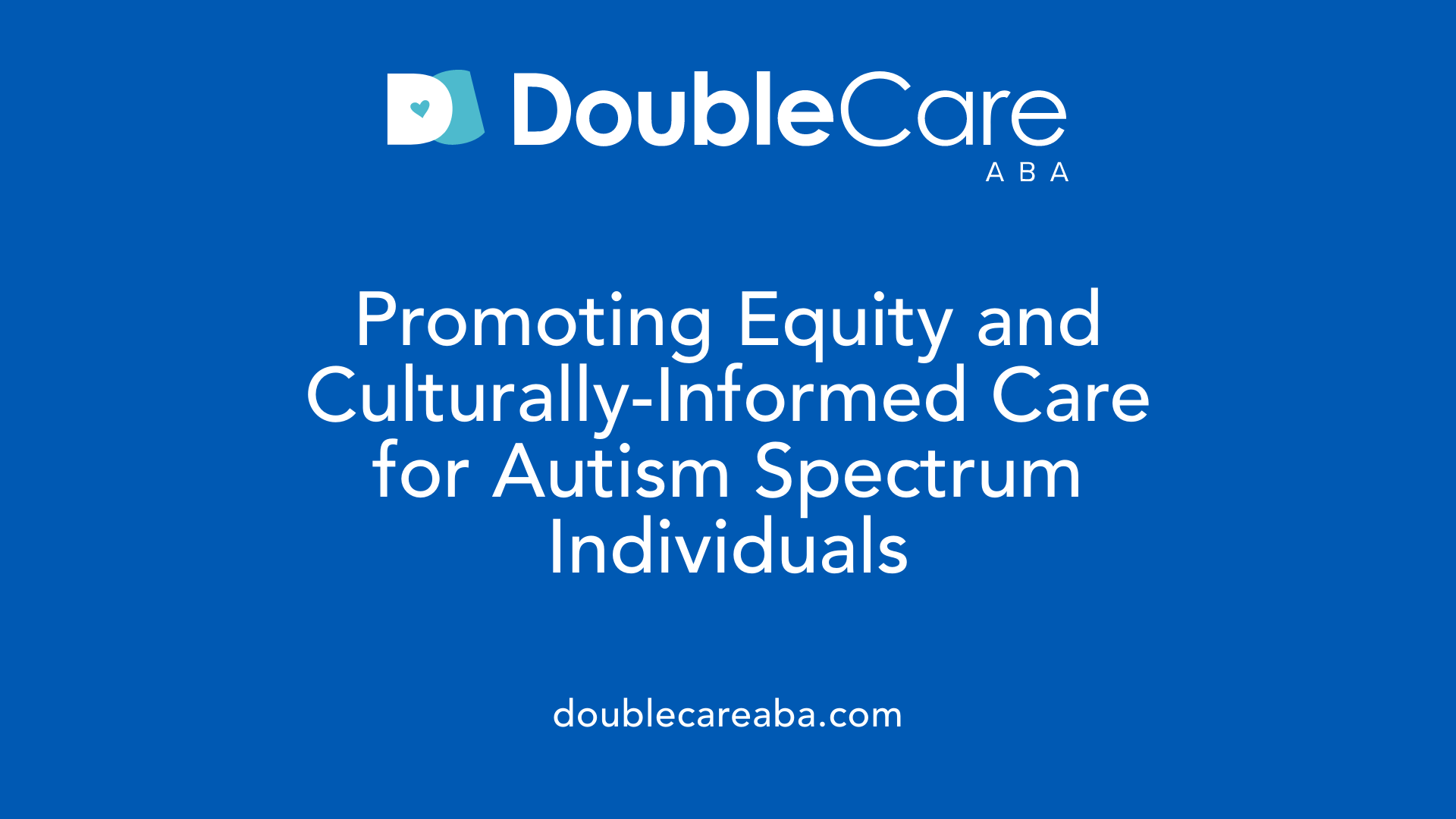Why Is Autism Increasing?
Unraveling the Rise in Autism Diagnoses: Trends, Causes, and Care

Understanding the Growing Numbers of Autism Spectrum Disorder
Autism Spectrum Disorder (ASD) diagnosis rates have seen a significant increase over the past decade, sparking much discussion and research within healthcare and educational communities. This article explores the multifaceted reasons behind this rise, examines current trends, and highlights the critical role of evidence-based interventions such as Applied Behavior Analysis (ABA) therapy in supporting individuals on the spectrum.
Current Trends in Autism Diagnosis and Prevalence

What are the recent trends in autism diagnosis rates?
Autism diagnosis rates in the United States have risen sharply over the past decade. From 2011 to 2022, the prevalence increased by 175%, from 2.3 to 6.3 per 1,000 individuals. This substantial rise reflects improved awareness, broader diagnostic criteria, and enhanced screening efforts nationwide.
Which age groups have the highest diagnosis increases?
Children aged 5 to 8 years consistently show the highest absolute diagnosis rates, reaching 30.3 per 1,000 in 2022. However, the most significant relative increase occurred among young adults aged 26 to 34 years, whose diagnoses surged by 450%. This trend suggests many adults may have been undiagnosed in childhood and are now receiving identification and support later in life.
How do gender and racial/ethnic patterns affect diagnosis rates?
Diagnosis rates have increased more steeply among females compared to males. Among children, female diagnoses rose by 305% versus 185% for males, and in adults, female rates increased by 315% compared to 215% for males. Consequently, the male-to-female ratio in children declined from approximately 4.3:1 in 2011 to about 3:1 in 2022, indicating enhanced recognition of autism in females.
Racial and ethnic minority groups, including Hispanic, Black, and Asian children, also experienced notable increases in diagnosis rates. This reflects broader access to diagnostic services and improved detection efforts in underserved communities.
Why are improvements in diagnostics and data important?
These findings come from a large-scale study analyzing electronic health records and insurance claims across 12 diverse health systems, covering over 12.2 million people. This robust dataset provides a comprehensive picture of national trends and supports the ongoing refinement of diagnostic practices. Enhanced early detection and expanding adult diagnoses underscore the need for age-appropriate interventions and culturally informed care across diverse populations.
| Aspect | Details | Significance |
|---|---|---|
| Prevalence Increase | 175% rise from 2011–2022 | Reflects greater detection and awareness |
| Age Group Impacted | Highest rates in children 5-8; largest increase in adults 26-34 | Highlights need for lifelong services |
| Gender Differences | Female rates increased more sharply | Suggests improved recognition of females |
| Racial/Ethnic Trends | Significant rises among minorities | Indicates progress in healthcare equity |
| Data Source | 12 health systems; 12.2+ million people analyzed | Confirms national representativeness |
Factors Contributing to the Rising Autism Rates
Diagnostic criteria broadening and increased awareness
The notable increase in autism diagnosis rates over the past decade is largely driven by broader diagnostic definitions and increased awareness among healthcare providers and the public. Expanded screening during wellness visits and improved diagnostic tools have enabled earlier and more frequent identification, especially of individuals with subtler symptoms. This enhanced detection partly explains the 175% rise in diagnosis rates from 2011 to 2022, with steady increments rather than sudden spikes.
Genetic and environmental risk factors for ASD
Autism Spectrum Disorder has a strong genetic component, with over 1200 risk genes identified. Mutations, copy number variations, and epigenetic modifications underlie many cases. Environmental influences also play a significant role, including exposures during pregnancy such as maternal infections, air pollution, and advanced parental age. These factors potentially trigger immune activation, oxidative stress, and neuroinflammation, contributing to ASD development.
Role of prenatal and early-life influences
Early-life environmental factors significantly impact autism risk. Advanced parental age, maternal diabetes, infections during pregnancy, severe birth complications, prematurity, and low birth weight are associated with higher risk of ASD. These factors may disrupt neurodevelopment, highlighting the importance of prenatal care and early monitoring.
Nutritional and metabolic factors
Nutritional influences such as vitamin D and folic acid status are increasingly recognized in autism risk. While folic acid supplementation around conception is linked to reduced ASD risk, aberrant maternal folate levels or genetic variants affecting folate metabolism may elevate risk. Vitamin D deficiency during pregnancy and early childhood, suggested by seasonality patterns, is another potential contributor. Metabolic disturbances like maternal metabolic syndrome and inflammation also play a role in shaping risk.
Dispelling myths about vaccines
Extensive research confirms that vaccines, including MMR, do not cause autism. The rise in diagnoses is unrelated to vaccination and instead attributed to factors like increased screening, broader diagnostic criteria, and heightened awareness. Addressing this myth is crucial for public health and vaccine confidence.
The Role of Genetic and Environmental Influences in Autism
What are the genetic risk factors and mechanisms in ASD?
Genetic factors play a substantial role in Autism Spectrum Disorder (ASD). Researchers have identified over 1,200 risk genes linked to autism. These genes contribute through various mechanisms, including gene mutations, copy number variations (large sections of DNA duplicated or deleted), and epigenetic modifications which alter gene expression without changing the DNA sequence itself. These genetic changes affect brain development and function, increasing the likelihood of ASD.
How do environmental factors influence ASD risk?
Environmental influences during prenatal and early life stages also affect ASD risk. Key factors include advanced parental age, maternal diabetes, infections during pregnancy, and exposure to air pollution. These elements may trigger immune activation, oxidative stress, and neuroinflammation in the developing brain, all of which can contribute to atypical neural development associated with autism.
How do genes and environment interact in ASD?
The development of ASD appears to involve complex interactions between genetic predispositions and environmental exposures. For instance, polymorphisms in genes related to folate metabolism, such as the MTHFR gene, can interact with maternal nutrition levels, particularly folic acid intake. Such interactions may increase or decrease ASD risk. Maternal metabolic and inflammatory states during pregnancy further illustrate how genetics and environment intertwine to influence neurodevelopmental outcomes.
What emerging biomarkers aid early autism diagnosis?
Identifying ASD early is crucial for timely intervention. Promising biomarkers under investigation include neuroimaging classifiers that reveal brain structure differences, EEG patterns indicating neural activity deviations, eye-tracking data reflecting social attention, and gene expression profiles. Additionally, inflammatory markers, proteomic and metabolomic profiles, plus gut microbiota characteristics, offer insights into the biological changes seen in autism. These biomarkers could lead to earlier and more accurate ASD diagnoses in the future.
Applied Behavior Analysis (ABA) Therapy: A Cornerstone Intervention
What is Applied Behavior Analysis (ABA) therapy?
Applied Behavior Analysis (ABA) therapy is an evidence-based approach designed to understand how the environment influences behavior. It utilizes behavioral techniques such as positive reinforcement and a detailed analysis of antecedents, behaviors, and consequences to nurture skill acquisition and reduce challenging behaviors.
Individualized and evidence-based approaches
ABA therapy is highly individualized, with specific goals tailored to each person's unique needs, strengths, and challenges. Ongoing assessments help shape these goals to support improvements in communication, social skills, attention, memory, and academic performance. The therapy evolves to incorporate naturalistic and play-based methods that make learning engaging and relevant.
Behavioral techniques and goals of ABA
Central to ABA is the systematic use of behavioral principles to increase desired behaviors and decrease unwanted actions. Techniques include discrete trial training, modeling, prompting, and reinforcement strategies. The primary goal is to teach functional skills that enhance independence, such as self-care, social interaction, and problem-solving.
Therapy settings and its aims for independence
ABA therapy can be delivered in various settings—from clinics and schools to home environments—making it flexible and accessible. Its overarching aim is to empower autistic individuals to lead as independent and fulfilling lives as possible, fostering autonomy and improved participation in community and social contexts.
Delivery and Providers of ABA Therapy for Autism

How is ABA therapy typically delivered?
ABA therapy is typically delivered by trained and certified professionals who specialize in behavioral analysis. These sessions commonly involve one-on-one interaction using evidence-based techniques such as Discrete Trial Training, Natural Environment Training, and Verbal Behavior Therapy. Therapists employ positive reinforcement and motivational systems to encourage desired behaviors, customizing treatments to each individual's needs. The therapy can take place in various settings including the home, schools, and community environments.
Who provides ABA therapy and what qualifications are required?
Professionals delivering ABA therapy are usually licensed or certified experts in behavior analysis. Key providers include Board Certified Behavior Analysts (BCBAs), Registered Behavior Technicians (RBTs), and Licensed Behavior Analysts (LBAs). These practitioners undergo rigorous training and certification processes to ensure expertise in autism intervention. They work collaboratively with families and educational teams to design and implement treatment plans tailored for individuals on the autism spectrum.
What is the role of trained professionals and family collaboration?
Trained ABA providers play a central role in assessment, therapy design, and implementation. Importantly, they also collaborate closely with families, caregivers, and educators to support consistency and generalization of learned skills across environments. Family involvement is essential in reinforcing behavioral strategies and ensuring treatment gains are maintained and extended beyond clinical settings.
Why is ongoing assessment and customization important?
ABA therapy requires continuous evaluation to track progress and modify intervention strategies as needed. Ongoing assessments help identify emerging needs, refine goals, and personalize the delivery to optimize behavioral improvements. Customization ensures that therapy remains relevant and effective for each individual's evolving abilities and challenges, supporting meaningful and lasting outcomes.
The Expanding Need for Comprehensive Support and Inclusion

Rising Diagnosis Among Adults and Minority Groups
Over the past decade, autism diagnoses have surged notably among adults, especially young adults aged 26 to 34 who saw a 450% increase in diagnosis rates. This trend highlights that many individuals, possibly undiagnosed in childhood, are now receiving diagnoses later in life. Moreover, diagnosis rates among racial and ethnic minority children — including Hispanic, Black, and Asian populations — have escalated significantly, reflecting improved detection and access to diagnostic services within these communities.
Importance of Culturally-Informed Care and Accessibility
With growing prevalence across diverse populations, there is an urgent demand for culturally-informed care that respects differing backgrounds and experiences. Ensuring equitable access to diagnostic and intervention services across varied racial, ethnic, and socioeconomic groups is crucial. Tailoring healthcare approaches helps bridge gaps and fosters a more inclusive environment for autistic individuals and their families.
Addressing Stigma and Co-Occurring Conditions
Autistic individuals often face stigma and discrimination, which can negatively impact mental health and social integration. Additionally, co-occurring conditions such as epilepsy, anxiety, depression, and ADHD frequently accompany autism, necessitating integrated healthcare approaches. Raising awareness and educating the public can reduce stigma while specialized support can help manage these intersecting challenges.
Need for Lifelong Supports and Age-Appropriate Interventions
Given the wide variability in abilities and needs among autistic people, personalized, age-appropriate interventions are essential. Support spans from early childhood to adulthood and older age, emphasizing the importance of services that evolve over time. For many adults, newly diagnosed or long diagnosed, appropriate interventions, vocational support, and social services can significantly improve quality of life and autonomy.
The expanding diagnosis trends underscore the importance of comprehensive, inclusive support systems that address diverse needs across age groups and communities. Strengthening access to healthcare, combating stigma, and ensuring culturally competent care will promote well-being and full participation in society for autistic individuals.
Understanding and Supporting the Growing Autism Community
The rising prevalence of autism diagnoses highlights the evolving landscape of detection, awareness, and understanding of ASD. Improved screening, broader diagnostic criteria, and increased recognition, especially among adults, females, and minority groups, contribute significantly to this growth. Genetic and environmental factors also play important roles in autism risk. Crucially, interventions like Applied Behavior Analysis (ABA) therapy remain central to helping individuals on the spectrum develop essential skills, fostering independence, and enhancing quality of life. Moving forward, tailored, culturally sensitive, and accessible supports across the lifespan are key to addressing the diverse needs of the growing autism community.
References
- Autism Diagnosis Among US Children and Adults, 2011- ...
- Autism diagnosis on the rise, according to trends study
- Understanding autism: Causes, diagnosis, and advancing ...
- Data and Statistics on Autism Spectrum Disorder
- Increasing Prevalence, Changes in Diagnostic Criteria ...
- Autism
- Is There an Autism Epidemic? | Johns Hopkins
- Applied Behavior Analysis (ABA)
















